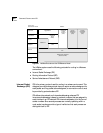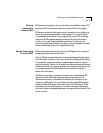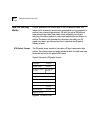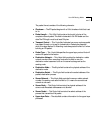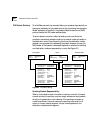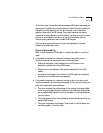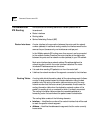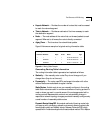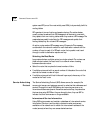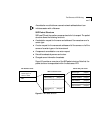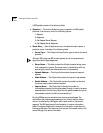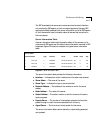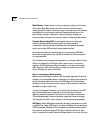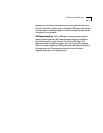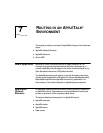
6-10 CHAPTER 6: ROUTING WITH IPX
system uses RIP (one of the most widely used IGPs), to dynamically build its
routing tables.
RIP operates in terms of active and passive devices. The active devices,
usually routers, broadcast their RIP messages to all devices in a network;
they update their own routing tables when they receive a RIP message. The
passive devices, usually hosts, listen for RIP messages and update their
routing tables; they do not send RIP messages.
An active router sends a RIP message every 60 seconds. This message
contains both the network number for each destination network and the
number of hops to reach it. In RIP, each router that a packet must travel
through to reach a destination equals one hop.
Selecting the Best Route
Large networks have multiple routes to a single network. The routers use
these criteria to select the best “route” to a network when choosing
between alternate routes:
■ Select the route that requires the lowest number of ticks.
■ If multiple routes exist with an equal number of ticks, select the route that
also has the lowest number of hops.
■ If multiple routes exist with both ticks and hops equal, choose any of the
routes as the “best” route.
Service Advertising
Protocol
The Service Advertising Protocol (SAP) allows servers (for example, file
servers, print servers, and gateway servers) to advertise their addresses and
services. Through the use of SAP, adding and removing services on an
internetwork becomes dynamic. As servers are booted up, they advertise
their services using SAP. When they are brought down, they use SAP to
indicate that their services are no longer available.
Internetwork Service Information
Using SAP, routers create and maintain a database of internetwork service
information. Clients on use this data to determine what services are
available on the network and to obtain the internetwork address of the
nodes (servers) where they can access desired services.



